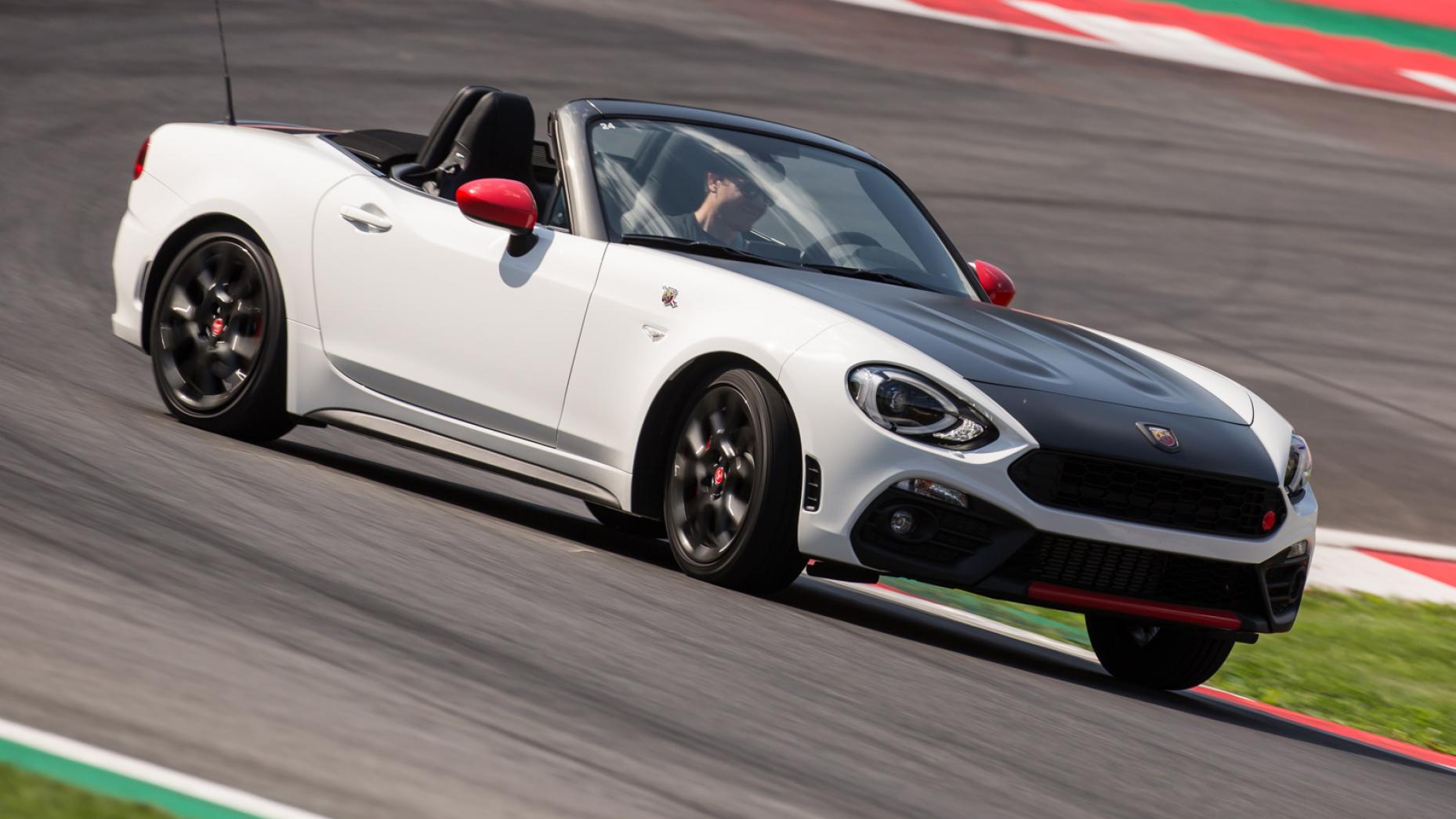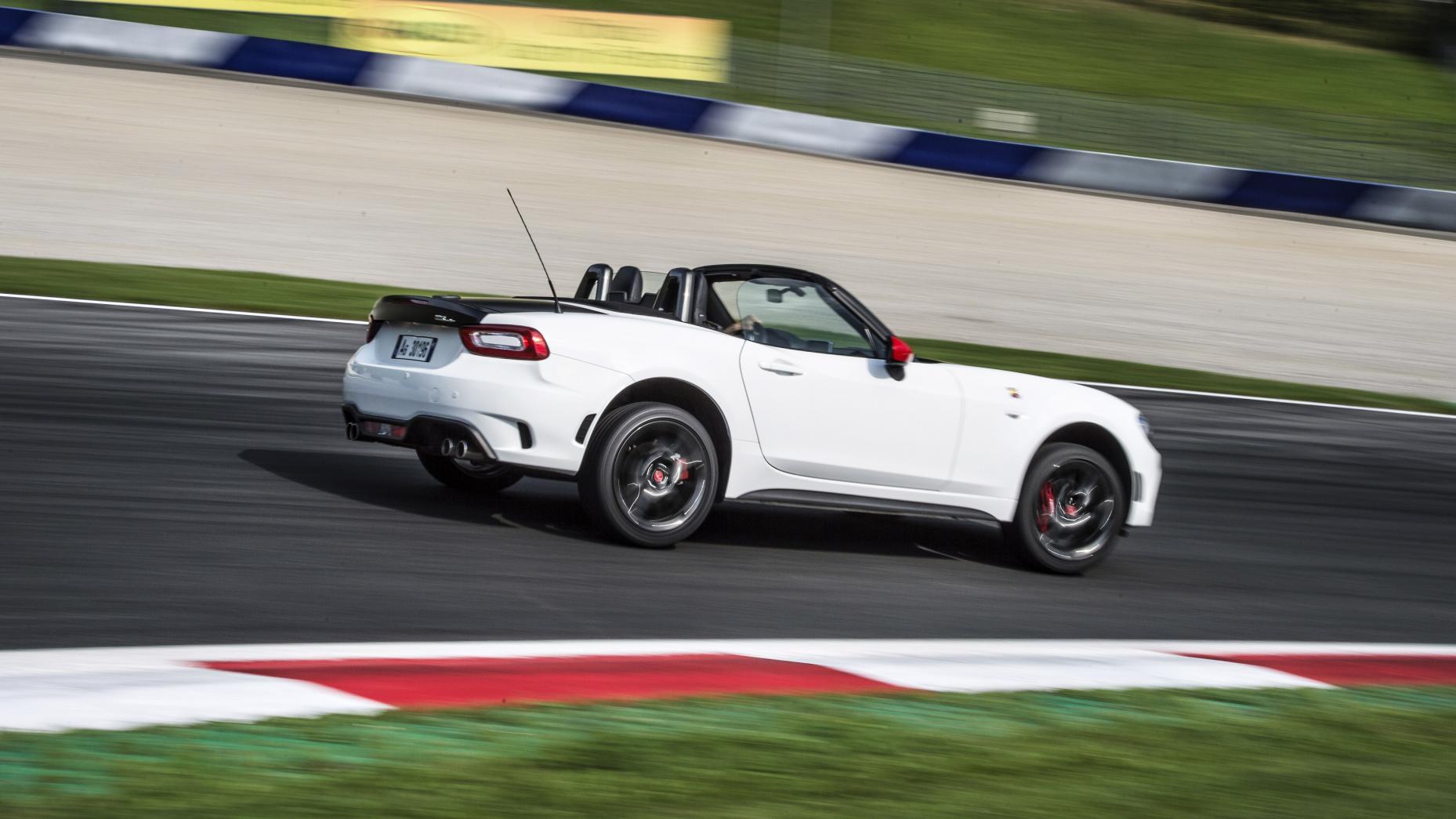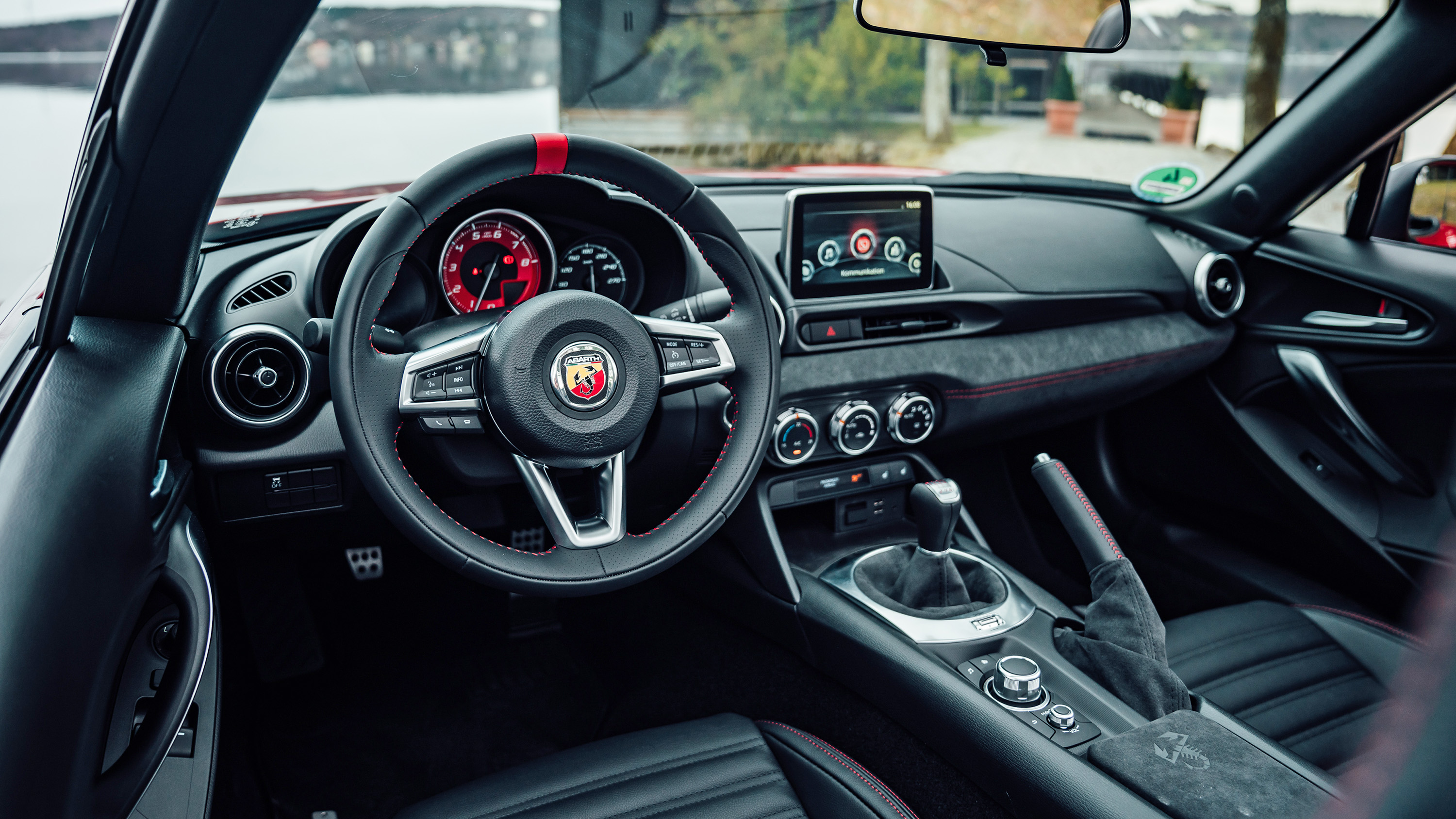
Driving
What is it like to drive?
You can drive an Abarth 124 Spider every day. It’s size, snappy gearbox and quick steering make it easy to thread around town, while the well-shaped seats and refinement enable it to see off a couple of hundred miles without too much tinnitus or backache. On B-roads, where you want to have fun, it is entertaining. It’s light and nimble and accurate. It’s not bad, it does the job. But on the whole it doesn’t do it quite as well as the MX-5.
By making it stiffer, the Abarth feels less supple than the Mazda. A fraction more grippy and less prone to roll, yes, but it doesn’t have the same fluidity, and the sharper settings make it feels slightly snatchier. Now it might well be that you prefer this extra dab of aggression, the more attacking front end, and that’s fine – it would be no good if the 124 was just a blueprint of the MX-5 – but the overall dynamic impression you get is that this one is a little less polished.
The Mazda fills you with this warm sense of everything carefully honed to work together, while there’s something slightly distracting about the Abarth. It’s not as fulfilling and rewarding as you want it to be. It's more boisterous, it likes to be bullied about the place, its 'Record Monza' sports exhuast making an uncouth noise as it does so. It's not high-brow, but it is good fun. Sometimes a lack of dynamic polish can free a car of pretension.
Most potential buyers might not care about this, happy in the knowledge they have a small roadster that’s more masculine than an MX-5 and does the job of blatting about with a spring in its step. And in one key area the 124 Spider does have leverage over the Mazda – it’s engine.
Mazda has stuck doggedly to natural aspiration, its most potent 2.0-litre developing 158bhp and 147lb ft at 4600rpm. It’s a sweet enough unit, but widely criticised for not delivering hot-hatch matching acceleration. The Abarth’s smaller (1.4-litre), single turbo motor isn’t that much more powerful (168bhp), but the turbo’s torque gains are significant in a car that only weighs a little over a tonne. It churns out almost 40lb ft more (184lb ft), and delivers it over 2,000rpm earlier (2,500rpm). Because the engine is light and small and the air paths are short, there’s not much inertia to overcome, so turbo lag is barely noticeable.
You don’t have to row the gearlever about so much (almost a shame, as it’s a reward in itself) and can instead let the engine go to work. It’s less stressful, and while it’s still going to struggle to keep a Golf GTI in sight, the extra slug of power over the Mazda is useful.
The little Brembo brakes are strong, and as with the MX-5, the driving characteristics match the visuals pretty well. But the impression you’re left with after a drive is a car that needs just a little more time and effort spent on it – to make it feel more cohesive, to sweeten the mid-corner balance, to get a bit more steering feel, to join the two ends of the car together better so you, sat at the back, feel more in touch with what’s happening up front. But these are probably only criticisms if you’re an enthusiast, and I’m not sure this is an enthusiast’s car. They've likely gone for a second-hand Porsche Boxster.
Speaking of which, there's an optional six-speed automatic. You probably only want this if your licence or situation dicates you need an auto. It's not bad, but the standard manual is so much fun (not to mention cheaper to buy and run), it's a shame to ignore it.
Featured

Trending this week
- Car Review
BMW iX3






